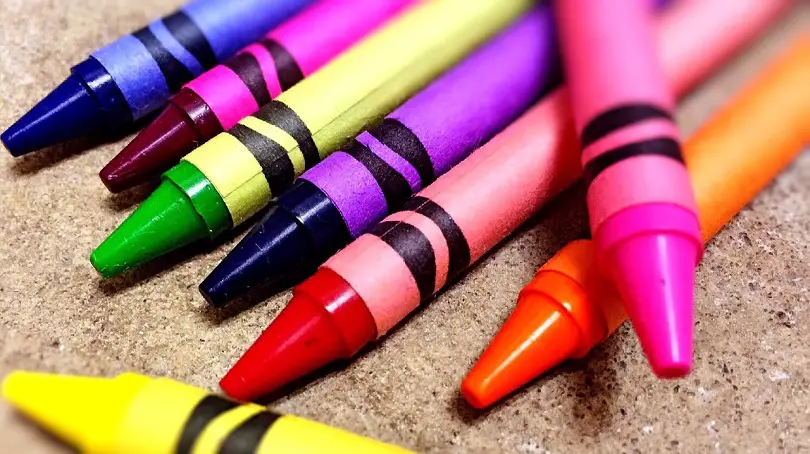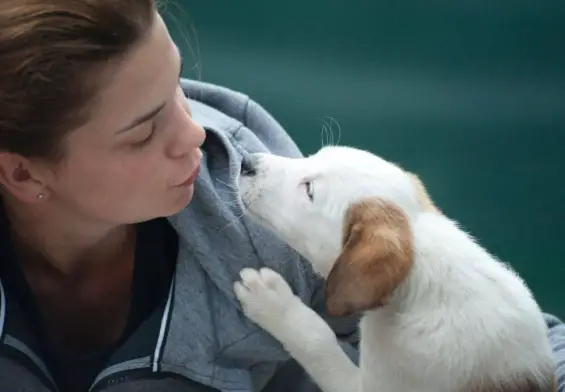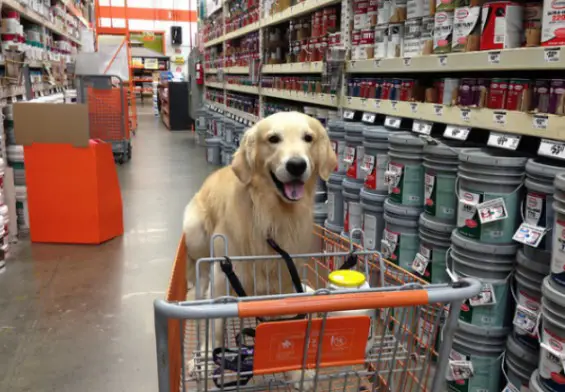Anyone who loves dogs cannot deny how adorable they are. However, that is not all to these beautiful creatures. They can also get playful. Like children, you may have to keep a close eye on what they do, and their interactions, or you may have to pay the price.
How far can a dog’s playfulness go? Beyond your imagination would be a fitting answer. Some pups nibble and chew on anything they can get their teeth on; others will lick or smell whatever they find interesting, with the hopes of figuring out what it could be.
Dogs are curious creatures. Should you place something mysterious before them or within their vicinity, they will try to interact with it or discover its taste and smell. You can imagine the effect that something interesting or appealing can have on their curiosity.
Crayons look attractive. They may not have an appealing smell or taste, but their color variations make them appealing to the eyes. Thanks to their curiosity, dogs would most likely want to discover more about crayons. They can smell and even taste or eat them to determine more.
Therefore, if you found out that your dog ate crayons, it would first be best to relax and understand that any dog can be tempted to try them. So, what is there to know about a dog’s ingestion of crayons? What should you do? Is it harmful? When will you need to see a vet?
Crayons
If your child likes to draw, or you did at some point, you may have used or bought crayons. They are drawing or writing sticks made of pigmented paraffin wax. You may not find them sweet-smelling or tasty, and neither are they edible; nevertheless, a dog’s curiosity is stronger.
How and Why
Do you wonder how your dog ended up eating crayons? Perhaps the bigger question is why crayons? If you have children, you may find crayons to be a common household item. It is easy to forget them lying around somewhere within the house.
When dogs come upon crayons, they may feel a desire to play with them or try out their taste. Upon consuming one, they may desire more and end up with a tummy full of crayons. The ingestion could affect their digestion and even excretion.
It is crucial to keep potentially harmful objects and items beyond reach in a house with children or dogs. If possible, lock them away or use adult-height shelves. Your dog may find ways of reaching the forbidden, but preventive measures will help prevent accidents and major health concerns.
If you are a dog lover, you perhaps know that dogs have different personalities. Some can be playful, and others, explorative. Your furry friend’s nature could be a great determining factor on whether they will be interested in consuming crayons or not; some ignore them, but others love to try.
Teething is an uncomfortable process in a pup’s growth. As the teeth come out, your little one’s gums could feel itchy and achy—they may end up chewing or nibbling on anything to ease the feeling. If they find crayons, they may not resist the urge to eat them.
It is a good idea to get a teething pup an appropriate toy. Today, you will come across various toys that are safe and suited for the stage. Therefore, keep crayons out of your furry friend’s reach. Lock them away or keep them on adult-height shelves.
You have probably noted that your dog has an appetite and, when hungry, can chew on anything it comes across. Indeed, some dogs do not easily get enough. If crayons are on their way, they may want to try to ease their urges. When a dog wants something so bad, it often finds a way.
Have you considered the possibility of your dog’s health condition that causes it to chew on anything, even if inedible? If your dog developed the habit and you are certain that it is not their diet, you can consider visiting a vet and getting professional recommendations and help.
Effects
Now that your dog has consumed crayons, what do you do? How would you know if they will be fine? Some people treat their dogs as their babies; if you are one of them, how would you feel about the possible effects of crayon consumption? Are you worried about what may happen?
You may feel relieved to know that crayons are not known to be toxic. If your furry friend consumes them in small amounts, they may not show any health or digestion effects. In most cases, the crayons will come out of their bodies (in poop) relatively unchanged.
Large dogs show the least effects of crayon ingestion. Nevertheless, there is a risk of health and digestion effects when dogs ingest crayons in large amounts. Besides an upset tummy, your dog could also drool excessively, vomit, or diarrhea. Your pup may experience more, depending on how much they took.
On the surface, a tummy upset may seem minor. However, if you ignore it, it could lead to your dog’s death. Crayons, in large amounts, can result in intestinal blockages; the stomach and esophagus are also susceptible to the blockages. The conditions can get fatal without medical attention. An operation is necessary for your furry friend’s tract to be cleared.
What to do
What good is information on the effects excess crayons can have on your dog without tips on what to do next—what should you do? We will look into the first and preceding steps to take upon finding your furry friend consuming or having ingested crayons.
It would first be best to prevent further consumption. Therefore, if your dog has a reach for more crayons or has some in its mouth, try to prevent their ingestion; keep the crayons from their reach. Your dog may experience worse effects the more it eats the crayons.
Your pup may not show any signs of ill health at the moment. Nevertheless, a veterinary’s confirmation that it is okay is necessary. Therefore, call your vet. Share information about what happened, including your dog’s data and the number of crayons it consumed.
Your vet may advise you to keep an eye on your furry friend. In that case, it would be best to watch out for vomiting and tummy aches—they could indicate more. It would help if you also were keen on your dog’s appetite and bowel movements. Struggles feeding and diarrhea are an indication of digestive or intestinal complications.
The Vet
Are you wondering what your vet will do after your call for crayon ingestion? Depending on how much your dog ate, you may have to do close monitoring or take your furry friend to the vet for an operation. In most cases of ingesting small amounts, dogs do not have to go to the vet.
But who decides whether or not to see a vet? You may end up making a wrong call that could lead to your dog’s death. If you have a vet’s number, give them a call and share the relevant information. After that, they should guide what to do and whether to pay a visit or not.
Upon examination, your vet has various options to help your dog through the state they are in. They can induce vomiting or direct you to do the same. However, it is not advisable to do it in a pet home. In some cases, it can also be dangerous since the crayon pieces can get stuck along your dog’s esophagus.
Stool-binding agents and anti-sickness medication can help a dog experiencing diarrhea and vomiting. Large crayon pieces that get stuck in the intestines, stomach, or esophagus call for an operation. It does not happen often; nevertheless, your vet will let you know the available treatment options.
Final Words
Few dogs will consume large amounts of crayons. Therefore, if your dog took only a small amount, you may not have much to worry about. In rare cases, crayons get stuck in your furry friend’s gut and require an operation. If, after treatment, your dog still seems unusually attracted to crayons or other inedible materials, you should consider further investigation.





